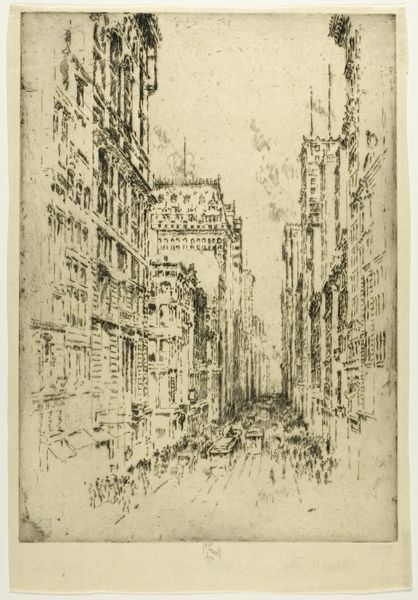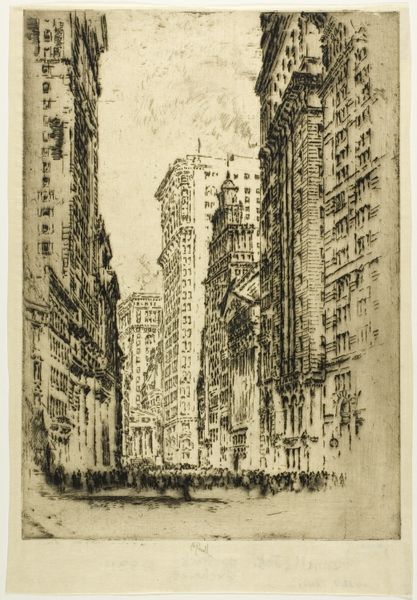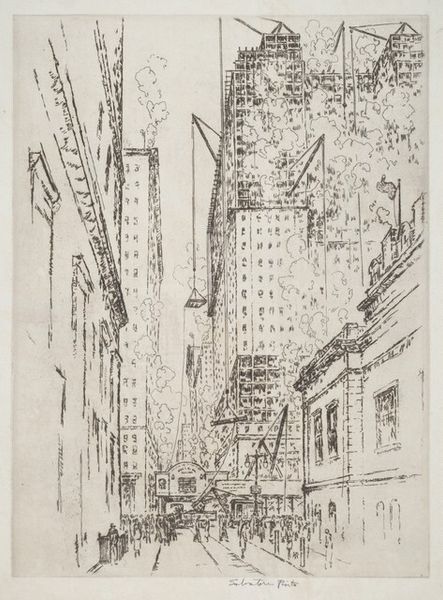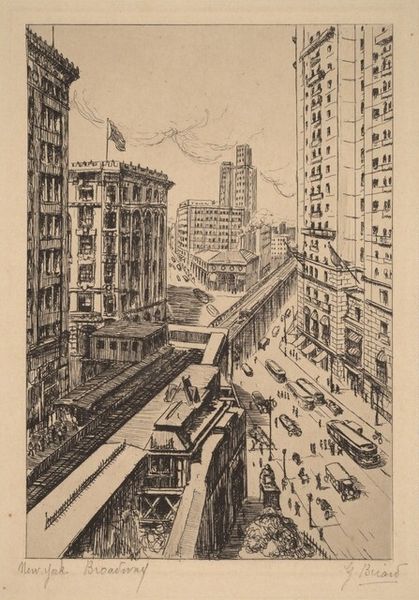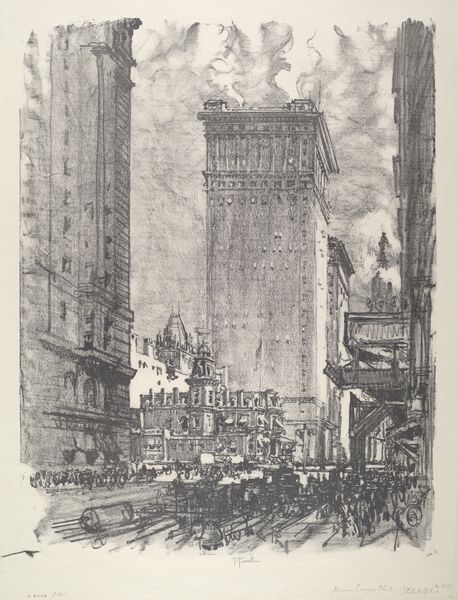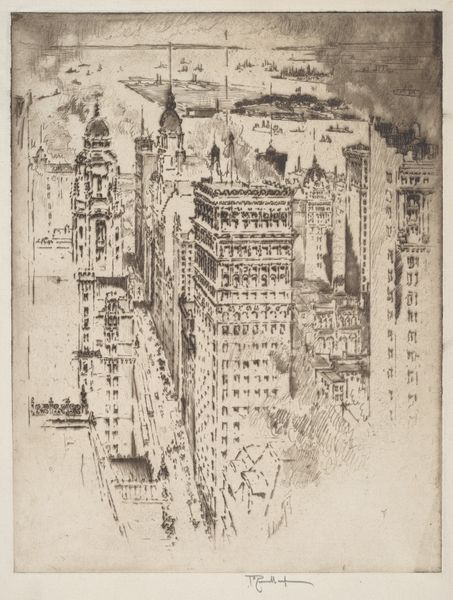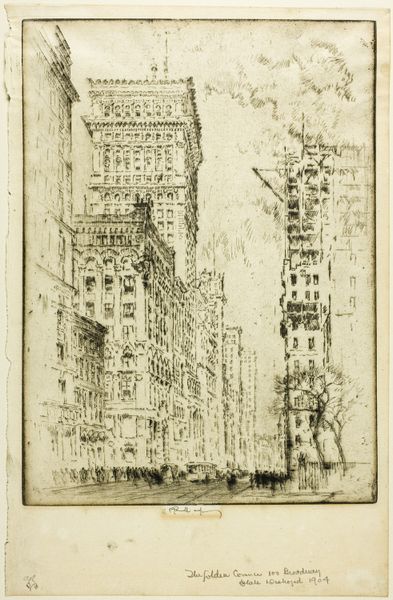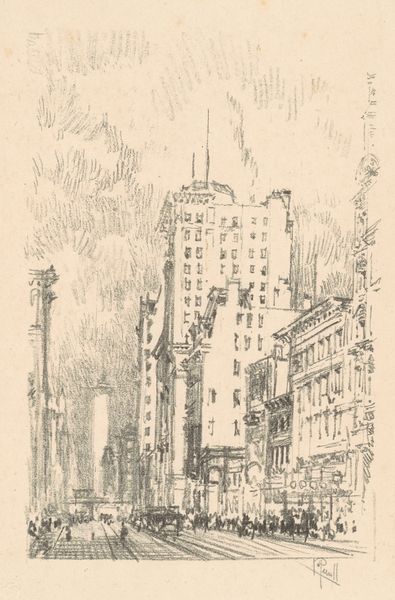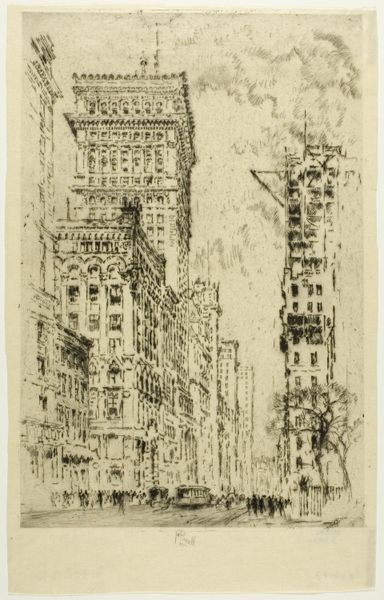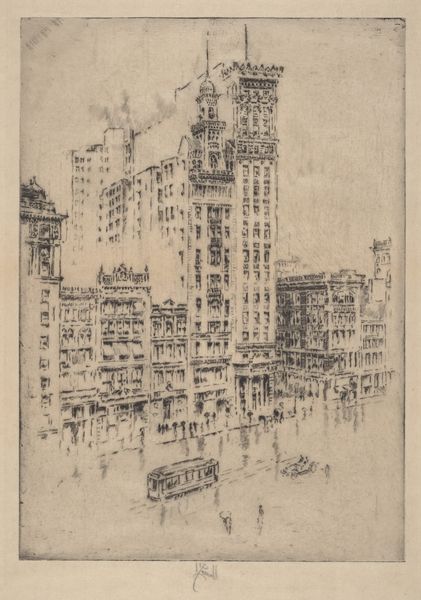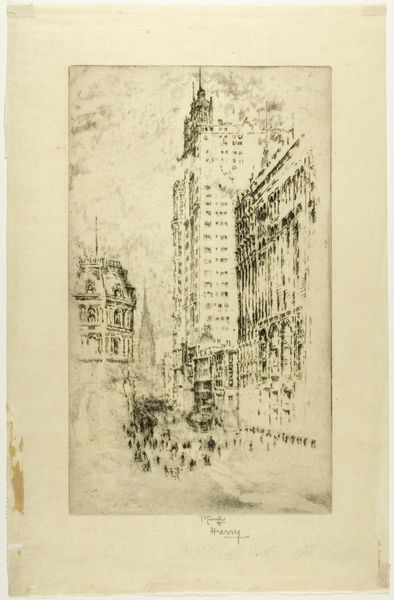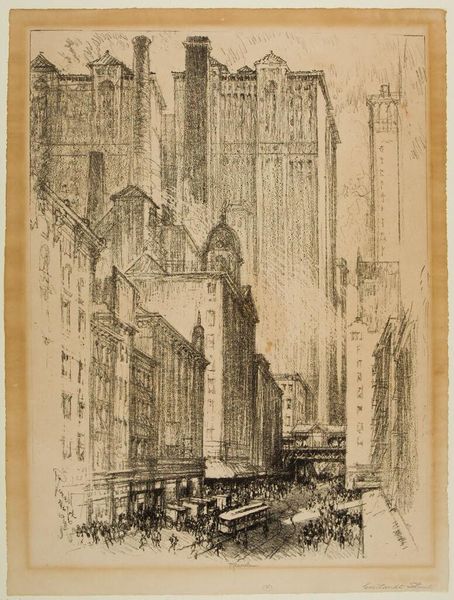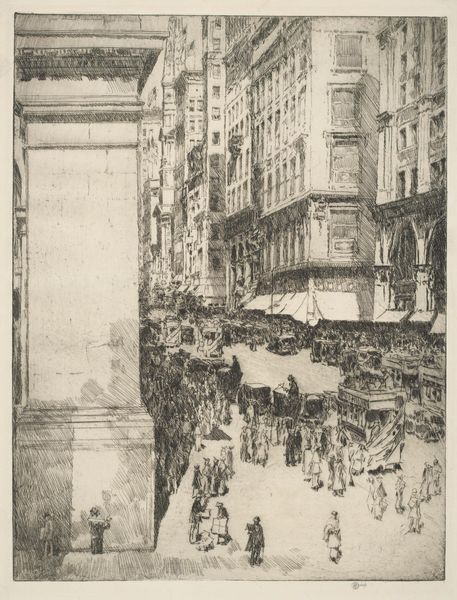
Dimensions: 302 × 195 mm (image); 330 × 195 mm (sheet)
Copyright: Public Domain
Editor: This is Joseph Pennell’s “Forty-Second Street,” created in 1904, an etching on paper. The details of the city are so delicate; it almost feels like looking at a memory fading away. How would you interpret this work, considering the artist's approach? Curator: Notice how Pennell employs etching to construct a dense, almost claustrophobic, cityscape. The lines, particularly in the buildings, converge, guiding the eye along the street’s perspective. Observe the tonal variations achieved through the etching technique – from the light, airy sky to the shadowed depths of the buildings. How do you perceive the use of this contrast? Editor: The contrast definitely creates depth and that sort of oppressive feeling I mentioned before, as if you’re swallowed by the buildings. Curator: Precisely. Now, consider the structural composition. The elevated train tracks act as a strong horizontal element, slicing through the verticality of the skyscrapers. It disrupts the spatial recession but it emphasizes the modernity, of the era. What might Pennell be suggesting with this stark juxtaposition? Editor: Maybe he’s showing the clash between older architecture and the new industrialized city, with the train tracks literally cutting through the older buildings? Curator: An astute observation. Pennell is demonstrating the evolving urban structure by combining graphic masses, using linear structures versus diffused lines, to construct urban architectural space as it emerges in early 20th century. Notice also the absence of distinctive figures and blurred definition. How does this affect your interpretation of place? Editor: The haziness makes it feel more universal, less about individual experiences, more about the overall urban experience of the time. Curator: Exactly. This allows for a focus on the structural, material elements. Pennell prioritizes an experience of modern structures over people. We, too, can value art using strict observations of medium, materials, and organization, using only textual and visual evidence. Editor: I see the city in a completely different light now, focusing on technique rather than theme. Curator: Indeed, by focusing on the composition and materiality, we gain new insights into the essence of the artwork.
Comments
No comments
Be the first to comment and join the conversation on the ultimate creative platform.
